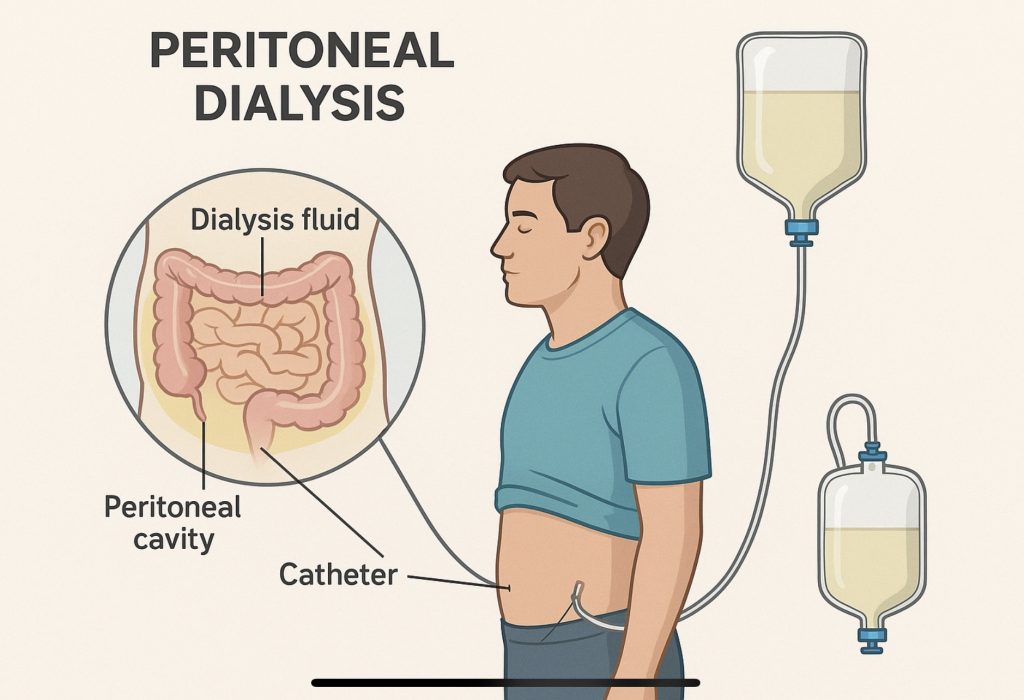
Today was one of those days which can put even the most pragmatic of people into a tizzy thinking about nothing but worst-case outcomes.
Peritoneal Dialysis, or PD for short, is something I knew I might have to start doing whilst waiting for a transplant but also something I purposefully avoided googling to make sure I didn’t fill my head with false information or horror stories.
Visiting hospital today with my wife for company, to chat with the PD team; it soon became quite aparent that there was no escaping the horror that is dialysis itself.
Tubes, bags, 3 times a day, every day, obsessive cleanliness, potential infection… All words and phrases to drive anxiety through the roof.
Really, PD which can be done at home, wherever, compared to HD (HaemoDialysis) which is done at hospital offers patients extended treatment and flexibility but its not for the feint of heart and I can see how some patients may fail catastrophically at looking after things themselves.
PD also comes in two forms; manual and machine based. Manual is just gravity fed and machine is, well, machine driven but also the manual process is 3 times a day whereas machine based is overnight while you sleep (or try to any way).
It is possible to switch between the two as may be required to administer the best treatment as well as to fit the patient’s abilities, lifestyle, preference etc.
Both can accomodate traveling abroad with the hospital coordinating delivery of consumables and equipment to your destination. I am unlikely to travel any time soon but it’s amazing to think that the nhs can make such things happen for patients!
So… I have been given an introduction as to how the treatment works and what I will need to do to make a success of it. I am prepared to undertake it all – I HAVE to really to stay alive after all!
The way it works is this:
Before PD starts, a catheter is inserted through the tummy via keyhole surgery one morning and a period of 2-3 weeks to heal is then observed. Then the patient-driven process can begin:
- Fill: You connect a bag of dialysis fluid to the catheter and drain the fluid into your belly.
- Dwell: The fluid stays inside (usually 4–6 hours). It absorbs waste and extra fluid from your blood through the lining of your abdomen.
- Drain: You then drain the used fluid into an empty bag.
- Repeat: This process is usually done 3–5 times a day, by hand, using gravity.
Each cycle is called an exchange and takes about 30–40 minutes.
This is done at home but can be done anywhere you have a CLEAN space, and you can move around normally during the dwell time.
The bags of dialysis fluid are 2 litres in size so yeah, quite a lot of liquid to have hanging inside you and that’s one thing I’m somewhat unnerved by.
Everything needed is delivered by courier every month so nothing to worry about there.
Dressings need to be changed routinely and special ones to be applied if having a shower. No hot baths allowed! 🙁
So, it’s not the WORST thing needing to be done but it will obviously impact on my personal need to ride my motorcycle from time to time – restricting my ability to be out for too long before needing to do an exchange.
Some logistics like that, I feel, may be the cause of breaking the process for some patients.
So there we are…. somewhat scary stuff but nothing I can make an excuse to not do.
When will I start? I suspect very VERY soon given recent blood results for urea, creatinine etc.
Once started, of course the news will be on here!
Leave a Reply